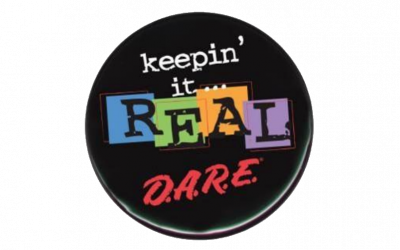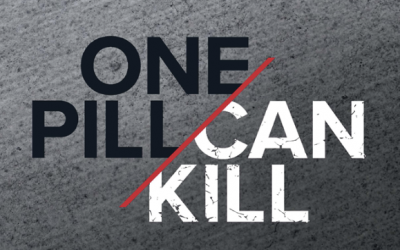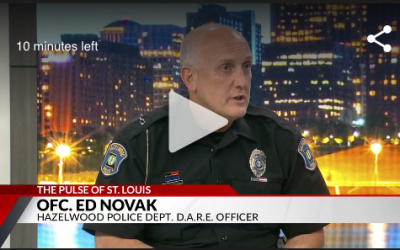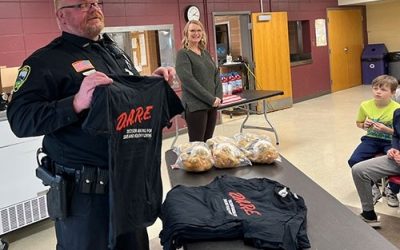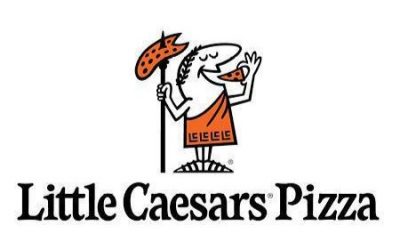Mental Health Stigma: Life or Death
Stigma impedes treatment access for many with opioid use dependence.
• Many people have extremely negative views toward people with an opioid dependence.
• Even emergency and primary-care doctors don’t want to treat people with drug addictions.
• Often people with a drug use disorder internalize negative beliefs of others.
The pervasive stigma against people with addictions, particularly opioid use disorder (OUD), is a major problem requiring urgent attention in the United States. Stigma is likely at least part of the reason why only 1 in 5 individuals with opioid dependence receives one of the three approved medications for treating this disorder. Yet these medications, including methadone, buprenorphine, and extended-release naltrexone, have proven safe and highly effective.
These facts have been known for decades. I prescribed naltrexone and methadone for patients with opioid use dependence (OUD) at Yale in 1975. More recently, researchers at the National Academies of Sciences, Engineering, and Medicine (NASEM) reported that treatment with either extended-release injected naltrexone or buprenorphine cuts the death risk from opioid addiction in half. According to Wilson Compton at the National Institute on Drug Abuse, “More than 80,000 people are dying of a drug overdose involving an opioid every year, while safe and effective medicines to treat opioid use disorder are sitting on the shelf unused”. Yet stigmatizing attitudes against such individuals prevail in the general public as well as among physicians and other professionals.
Negative Public Attitudes
Many in the public feel extremely negative towards people dependent on opioids. In a study including more than 1,000 respondents, 78% said individuals addicted to prescription opioids were to blame for their own addiction, and 72% said some people lack sufficient self-discipline to use prescribed opioids without developing an addiction. More than half (56%) said that people addicted to prescription opioids were more dangerous than others.
In general, the public has an even more negative view about people dependent on drugs than about people who are mentally ill. In one study with about 700 respondents, researchers compared negative public attitudes about people with mental illness to attitudes about individuals dependent on drugs. In response to questions whether they would be unwilling to work closely on a job with a person who was mentally ill, 38% said they would not want to work with such a person. However more than double (78%) said they would not work with a person with a drug addiction.
Another issue is that some individuals originally dependent upon prescription opioids have found it difficult to obtain the drugs. As a result, they turned to the illegal market and began to use heroin or fentanyl. The prescription opioid epidemic has quickly morphed to a heroin, then fentanyl epidemic, with fentanyl now leading overdose deaths in the United States. The stigma against people using illegal opioids is very high and may make it even more difficult for addicted individuals to obtain or accept needed treatment. Also, most of the general public is well aware that these drugs are illegal and obtaining them and using them is a crime.
Negative Views Among Professionals
It is likely there is a spillover of the public’s negative views towards people with OUD, even among physicians. For example, many primary care physicians could prescribe treatment drugs proven to work, such as either Suboxone or extended-release naltrexone. (The most successful treatment, methadone, is, sadly, still only prescribed only at specialized clinics nationwide.) In fact, treatment regulations were relaxed in 2023 by federal agencies and a special waiver to treat such patients was eliminated. Studies showed that the new regulations improved access and did not cause more abuse or diversion. Yet negative attitudes persist.
There is also a lack of awareness about treatment medications. One commonly held belief is that prescribing treatment medication is merely substituting one drug for another. Yet naltrexone contains no opioids, essentially makes people who take it immune to opioids, and is not a scheduled drug. (Naltrexone is also used to treat alcohol dependence.)
The medication Suboxone includes an opioid, but also contains naloxone, essentially the same drug as naloxone in Narcan, the frequently used and well-known medication that reverses the effects of opioids in a person with an opioid overdose. Narcan is so safe and effective it is available over the counter for good Samaritans, patients with OUDs, and their loved ones, without a prescription in an emergency.
While improvements have been made in training physicians and nurse practitioners on medication-assisted treatments, even some treatment facilities for individuals dependent on opioids often fail to use this therapy as their primary means of treatment. Some patients refuse treatment and give up, drop out and stop treatment well before they should.
Many physicians are reluctant to treat patients with OUD. In a study of about 1,000 primary care physicians and 1,000 physician trainees (residents), when asked if they would be willing to treat individuals with opioid dependence with one of the approved medications, only 20% of the experienced doctors said they would, although half the trainees said they would provide such treatment. Why such low percentages? If a heart medication were proven to successfully reverse heart disease and significantly reduce the death rate from heart ailments, would 80% of all cardiologists refuse to use such a drug? It seems unlikely.
Research indicates that many physicians share a “not in my neighborhood” type attitude toward individuals receiving medication treatment for an opioid addiction. Physicians may also be afraid to have such patients come to their office or embarrassed to be identified as a provider of services for OUD.
Self-Stigmatization
People with OUD and other forms of substance dependence often adopt the public’s negative attitude towards people dependent on opioids. First use maybe was their choice, but repeated use is the disease of addiction. Believing drug dependence is their fault, and feeling trapped in addiction, hopeless and helpless, they fail to seek treatment.
Or, if treated, they struggle to remain in treatment with the compounding of addiction’s effects on mood and the brain’s pleasure system with negative self-beliefs. They are also at very high risk for a future overdose of opioids. Such individuals may believe they can never recover, when the opposite is true. With so much shame and stigma, many eventually give up on recovery, making themselves at greater risk for an accidental opioid overdose.
CONCLUSION
Stigmatization against people dependent on drugs, particularly opioids, is prevalent and extends to many physicians who could treat such individuals but choose not to, such as emergency room or primary care providers. Despite increased funding for medicines to treat OUD, the training of physicians and others to prescribe treatments for OUD, and increased access to Narcan, shame and stigma appear root causes of the continued epidemic of deaths from opioid overdoses, Recognizing and fighting back against the stigma is the best way to reverse the continuing, shocking number of deaths from opioid overdose.
References
Oesterle TS, Thusius NJ, Rummans TA, Gold MS. Medication-Assisted Treatment for Opioid-Use Disorder. Mayo Clin Proc. 2019 Oct;94(10):2072-2086. doi: 10.1016/j.mayocp.2019.03.029. Epub 2019 Sep 19. PMID: 31543255.
Srivastava AB, Gold MS. Naltrexone: A History and Future Directions. Cerebrum. 2018 Sep 1;2018:cer-13-18. PMID: 30746025; PMCID: PMC6353110.
KEY POINTS
• Many people have extremely negative views toward people with an opioid dependence.
• Even emergency and primary-care doctors don’t want to treat people with drug addictions.
• Often people with a drug use disorder internalize negative beliefs of others.
The pervasive stigma against people with addictions, particularly opioid use disorder (OUD), is a major problem requiring urgent attention in the United States. Stigma is likely at least part of the reason why only 1 in 5 individuals with opioid dependence receives one of the three approved medications for treating this disorder. Yet these medications, including methadone, buprenorphine, and extended-release naltrexone, have proven safe and highly effective.
These facts have been known for decades. I prescribed naltrexone and methadone for patients with opioid use dependence (OUD) at Yale in 1975. More recently, researchers at the National Academies of Sciences, Engineering, and Medicine (NASEM) reported that treatment with either extended-release injected naltrexone or buprenorphine cuts the death risk from opioid addiction in half. According to Wilson Compton at the National Institute on Drug Abuse, “More than 80,000 people are dying of a drug overdose involving an opioid every year, while safe and effective medicines to treat opioid use disorder are sitting on the shelf unused”. Yet stigmatizing attitudes against such individuals prevail in the general public as well as among physicians and other professionals.
Negative Public Attitudes
Many in the public feel extremely negative towards people dependent on opioids. In a study including more than 1,000 respondents, 78% said individuals addicted to prescription opioids were to blame for their own addiction, and 72% said some people lack sufficient self-discipline to use prescribed opioids without developing an addiction. More than half (56%) said that people addicted to prescription opioids were more dangerous than others.
In general, the public has an even more negative view about people dependent on drugs than about people who are mentally ill. In one study with about 700 respondents, researchers compared negative public attitudes about people with mental illness to attitudes about individuals dependent on drugs. In response to questions whether they would be unwilling to work closely on a job with a person who was mentally ill, 38% said they would not want to work with such a person. However more than double (78%) said they would not work with a person with a drug addiction.
Another issue is that some individuals originally dependent upon prescription opioids have found it difficult to obtain the drugs. As a result, they turned to the illegal market and began to use heroin or fentanyl. The prescription opioid epidemic has quickly morphed to a heroin, then fentanyl epidemic, with fentanyl now leading overdose deaths in the United States. The stigma against people using illegal opioids is very high and may make it even more difficult for addicted individuals to obtain or accept needed treatment. Also, most of the general public is well aware that these drugs are illegal and obtaining them and using them is a crime.
Negative Views Among Professionals
It is likely there is a spillover of the public’s negative views towards people with OUD, even among physicians. For example, many primary care physicians could prescribe treatment drugs proven to work, such as either Suboxone or extended-release naltrexone. (The most successful treatment, methadone, is, sadly, still only prescribed only at specialized clinics nationwide.) In fact, treatment regulations were relaxed in 2023 by federal agencies and a special waiver to treat such patients was eliminated. Studies showed that the new regulations improved access and did not cause more abuse or diversion. Yet negative attitudes persist.
There is also a lack of awareness about treatment medications. One commonly held belief is that prescribing treatment medication is merely substituting one drug for another. Yet naltrexone contains no opioids, essentially makes people who take it immune to opioids, and is not a scheduled drug. (Naltrexone is also used to treat alcohol dependence.)
The medication Suboxone includes an opioid, but also contains naloxone, essentially the same drug as naloxone in Narcan, the frequently used and well-known medication that reverses the effects of opioids in a person with an opioid overdose. Narcan is so safe and effective it is available over the counter for good Samaritans, patients with OUDs, and their loved ones, without a prescription in an emergency.
While improvements have been made in training physicians and nurse practitioners on medication-assisted treatments, even some treatment facilities for individuals dependent on opioids often fail to use this therapy as their primary means of treatment. Some patients refuse treatment and give up, drop out and stop treatment well before they should.
Many physicians are reluctant to treat patients with OUD. In a study of about 1,000 primary care physicians and 1,000 physician trainees (residents), when asked if they would be willing to treat individuals with opioid dependence with one of the approved medications, only 20% of the experienced doctors said they would, although half the trainees said they would provide such treatment. Why such low percentages? If a heart medication were proven to successfully reverse heart disease and significantly reduce the death rate from heart ailments, would 80% of all cardiologists refuse to use such a drug? It seems unlikely.
Research indicates that many physicians share a “not in my neighborhood” type attitude toward individuals receiving medication treatment for an opioid addiction. Physicians may also be afraid to have such patients come to their office or embarrassed to be identified as a provider of services for OUD.
Self-Stigmatization
People with OUD and other forms of substance dependence often adopt the public’s negative attitude towards people dependent on opioids. First use maybe was their choice, but repeated use is the disease of addiction. Believing drug dependence is their fault, and feeling trapped in addiction, hopeless and helpless, they fail to seek treatment.
Or, if treated, they struggle to remain in treatment with the compounding of addiction’s effects on mood and the brain’s pleasure system with negative self-beliefs. They are also at very high risk for a future overdose of opioids. Such individuals may believe they can never recover, when the opposite is true. With so much shame and stigma, many eventually give up on recovery, making themselves at greater risk for an accidental opioid overdose.
CONCLUSION
Stigmatization against people dependent on drugs, particularly opioids, is prevalent and extends to many physicians who could treat such individuals but choose not to, such as emergency room or primary care providers. Despite increased funding for medicines to treat OUD, the training of physicians and others to prescribe treatments for OUD, and increased access to Narcan, shame and stigma appear root causes of the continued epidemic of deaths from opioid overdoses, Recognizing and fighting back against the stigma is the best way to reverse the continuing, shocking number of deaths from opioid overdose.
References
Oesterle TS, Thusius NJ, Rummans TA, Gold MS. Medication-Assisted Treatment for Opioid-Use Disorder. Mayo Clin Proc. 2019 Oct;94(10):2072-2086. doi: 10.1016/j.mayocp.2019.03.029. Epub 2019 Sep 19. PMID: 31543255.
Srivastava AB, Gold MS. Naltrexone: A History and Future Directions. Cerebrum. 2018 Sep 1;2018:cer-13-18. PMID: 30746025; PMCID: PMC6353110.
D.A.R.E. Makes a Comeback in Chino Schools
The drug abuse resistance program D.A.R.E. has returned to Chino elementary schools after 20 years, with a focus on healthy decision-making skills and self-advocacy. Approximately 900 fifth-grade students in the Chino Valley Unified School District are participating…
Elementary Schools in New Hanover County Roll Out New D.A.R.E. Program
WILMINGTON, N.C. (WECT) - A portion of $50 billion in settlement money will be going toward drug education for elementary school students. A new version of the well-known D.A.R.E. program will look different than what people have seen in the past. It’s a new program...
Fidelity of D.A.R.E. Officers’ Delivery of “keepin’ it REAL” in Elementary & Middle School
From Prevention Science
Abstract
The goal of the current study is to examine the degree to which measures of quality of implementation and student engagement moderate pretest–posttest changes in mediating variables that are targeted by D.A.R.E. “keepin’ it REAL”
D.A.R.E. Launches Fentanyl Prevention Education Lessons!
The Drug Enforcement Administration calls Fentanyl “the single deadliest drug threat our nation has ever encountered.”
From Fentanyl to Facebook, D.A.R.E. Officers Tackle Teen Addictions
ST. LOUIS – Studies show that more than 100,000 Americans die of overdose each year. As police departments grapple with drug-related deaths, they’re also addressing another addiction – one that didn’t exist 20 years ago. Teens and even children are finding themselves...
Thomasville Sheriff’s Office Hosts D.A.R.E. Officer Training
THOMASVILLE- Every year, Georgia D.A.R.E., or Drug Abuse Resistance Education, resource officers have to attend an updated training seminar. For a week, officers from all across the state meet in a different town and learn the newest rules and procedures. This year,...
Initial Year of D.A.R.E. Program in the Eastern Allamakee Community School District Sets the Foundation for Community Support System
Eastern Allamakee Community School District fifth and sixth grade students worked with Lansing Police Chief Conrad Rosendahl this past school year to complete training in the Drug Abuse Resistance Education (D.A.R.E.) program. The goal of the D.A.R.E. program is to...
D.A.R.E./keepin’ it REAL elementary curriculum:
Substance use outcomes
In 2021, the University of North Carolina, Greensboro and Prevention Strategies completed its three year, multi-longitudinal evaluation of D.A.R.E.’s keepin’ it REAL elementary school prevention education curriculum. The results of that study were submitted for peer...
Thank you for your support! Our Fundraiser has completed: Team up with Little Caesars and D.A.R.E. to Keep Kids Safe
The fundraiser has completed, thank you for your support.




